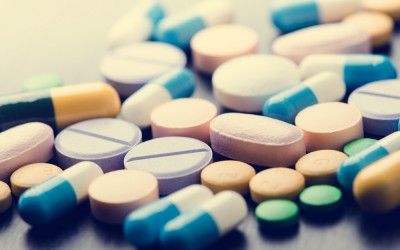Diabetes is a condition in which excess glucose is found in an individual’s blood.
This can happen due to various reasons. Either enough insulin is not being produced in the body (Type 1 Diabetes) or the body is resistant to the insulin being produced (Type 2 Diabetes), often defective genes (Genetic) are responsible for this condition.
Insulin is the hormone signalling cells to absorb glucose for later usage such as energy cosumption. So when there is an issue with respect to insulin, glucose is not taken up by the cells and it ends up getting accumulated in the bloodstream. This is when diabetes is diagnosed. Depending upon the condition, doctors prescribe either insulin doses or medication or both to the patient.
As with most drugs, medications prescribed for diabetes have their side effects too.
The most commonly prescribed medication is metformin, commonly known as glucophage which comes under the category of biguanides. It improves the body’s response to insulin, thereby improving glucose uptake. But the side effects of this drug cause stomach problems like pain, diarrhea, discomfort and decreased appetite.
Sulphonylureas are the oldest class of drugs being given to diabetics. Their role, like others, is to reduce the amount of blood glucose in our body. But when the blood glucose becomes too low, it leads to a condition known as hypoglycemia. Hypoglycemia is a serious side effect of sulphonylureas besides weight gain. Other side effects include liver disease, reduced red blood cell count, skin rashes, etc.
Thiazolidinediones or TZDs include medications with the name of Actos and Avandia. They make the muscle, liver and fat cells more sensitive to insulin. But they are prone to causing heart failure and bladder cancer. Other side effects include fatigue, muscle pain, sinus, headache, bone fracture, hypoglycemia and sore throat.
The next class of drugs is called DPP-4 inhibitors. DPP4 stands for Dipeptidyl peptidase-4 inhibitor. They help the pancreas in producing more insulin. They are tolerated by the body to a large extent, but can cause some side effects like Urinary tract infections (UTIs), fluid retention, headaches, facial swelling, joint pain, etc. The generic names of drugs of this class include Sitagliptin, Saxaglipton and Linaglipton. They are commonly available as Tanuvia, Onglyza and Tradjenta.

The newest class of drugs to come into the market is the SGLT-2 inhibitors (Sodium Glucose Co-transporter -2). They help the body in getting rid of excess glucose by eliminating it in the urine. They cause obvious side effects like UTIs, vaginal/penis yeast infections or upper respiratory tract infections.
There is another class of drugs which delay the digestion of food molecules like starch, carbohydrates which in turn cause delay in production of glucose. They are known as α- Glucosidase inhibitors and can cause bloating, diarrhea and gas as side effects. Their side effects are obvious because they disturb the digestive system. They are only prescribed rarely because they are not very effective. Amylin analogues also have the same effect as α- Glucosidase.
Meglitinides act just like sulphonylureas. The only difference is that they are short acting. They also cause weight gain and hypoglycemia, but the risk is definitely lower.
Among the bile acid sequestrants, Colesevelam (Welchol) is the only drug used. They decrease the amount of bile acid that is reabsorbed. They cause heartburns, constipation, and stomach pain or increase the triglyceride levels.
Dopamine agonists also have only one approved drug- Bromocriptine (Cycloset). They can cause weakness, nausea, dizziness, headache, runny nose, sinusitis, etc.
Lactic acid is a rare side effect caused by some of these drugs. It is not commonly seen, but if it occurs and is not treated on time, it can be deadly.
Medications should always be given by a specialized diabetic medical practitioner. The drugs are usually given in combinations, between themselves or with insulin. Side effects are almost always there, but their intensity and frequency can be controlled. Doses should be taken only as prescribed and at the appropriate time. In short, utmost care should be taken by both, the doctor and the patient.
As you can see from all the above side effects, if you have been diagnosed with type-2 diabetes, be prepared for a tough ride. But alternatively you can also try to reverse the disease naturally.